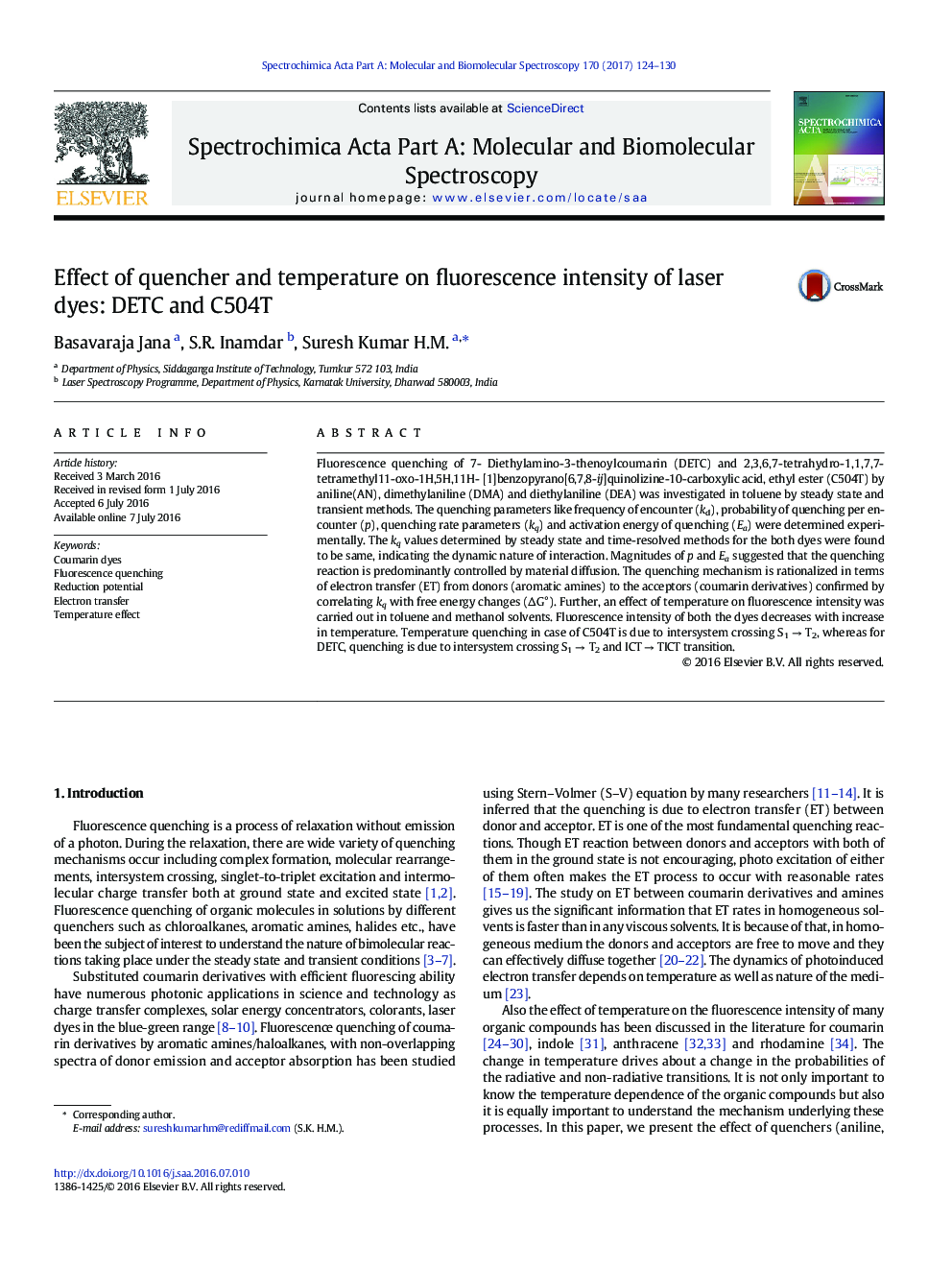| کد مقاله | کد نشریه | سال انتشار | مقاله انگلیسی | نسخه تمام متن |
|---|---|---|---|---|
| 1230774 | 1495199 | 2017 | 7 صفحه PDF | دانلود رایگان |
• Laser dyes DETC and C504T have been quenched by aromatic amines and follow the dynamic in nature
• The value of Ea < Ed indicates that quenching is controlled by diffusion process.
• Rehm-Weller equation confirms the electron transfer (ET) process from amines to coumarins.
• Fluorescence intensity of DETC & C504T varies with temperature.
• Temperature quenching in C504T is due to S1 → T2, for DETC, it is due to S1 → T2 and ICT → TICT transition.
Fluorescence quenching of 7- Diethylamino-3-thenoylcoumarin (DETC) and 2,3,6,7-tetrahydro-1,1,7,7-tetramethyl11-oxo-1H,5H,11H- [1]benzopyrano[6,7,8-ij]quinolizine-10-carboxylic acid, ethyl ester (C504T) by aniline(AN), dimethylaniline (DMA) and diethylaniline (DEA) was investigated in toluene by steady state and transient methods. The quenching parameters like frequency of encounter (kd), probability of quenching per encounter (p), quenching rate parameters (kq) and activation energy of quenching (Ea) were determined experimentally. The kq values determined by steady state and time-resolved methods for the both dyes were found to be same, indicating the dynamic nature of interaction. Magnitudes of p and Ea suggested that the quenching reaction is predominantly controlled by material diffusion. The quenching mechanism is rationalized in terms of electron transfer (ET) from donors (aromatic amines) to the acceptors (coumarin derivatives) confirmed by correlating kq with free energy changes (ΔG°). Further, an effect of temperature on fluorescence intensity was carried out in toluene and methanol solvents. Fluorescence intensity of both the dyes decreases with increase in temperature. Temperature quenching in case of C504T is due to intersystem crossing S1 → T2, whereas for DETC, quenching is due to intersystem crossing S1 → T2 and ICT → TICT transition.
The accessibility of amine quencher to substituted coumarin dyes DETC and C504T as attested by dynamic quenching of their fluorescence emission, often interpreted in terms of electron transfer (ET). The experimentally determined kq values for dynamic quenching show good agreement to those predicted by Rehm-Weller and also the kq values show good correlation with the free energy changes (ΔG°) for ET reaction within the frame work of Marcus ET theory. The influence of temperature (20–50 °C) on DETC and C504T dyes in toluene and methanol reveals that fluorescence intensity decreases with increase in temperature without shifting in the position of fluorescence maxima. This is due to intersystem crossing S1 → T2 in case of C504T and S1 → T2 and ICT → TICT transition taking place simultaneously or independently for DETC.Figure optionsDownload as PowerPoint slide
Journal: Spectrochimica Acta Part A: Molecular and Biomolecular Spectroscopy - Volume 170, 5 January 2017, Pages 124–130
